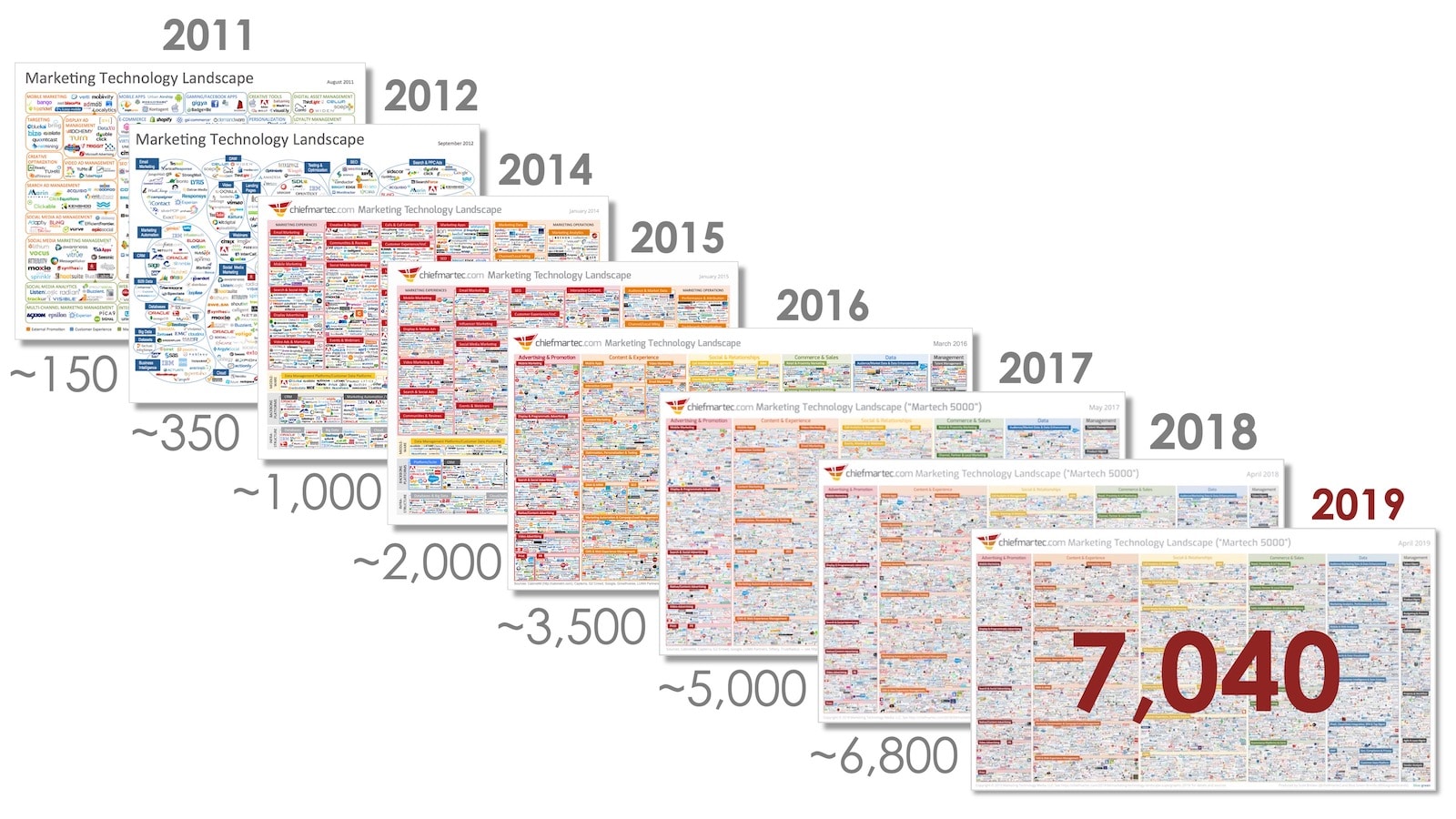The “2019 Martech 5000” infographic based on Scott Brinker’s work illustrates the rate of marketing technology (“martech”) solution proliferation, showing how the martech space has grown to more than 7,000 solutions today. If you’re in charge of marketing analytics for a smaller company with a limited budget, contemplating that vast array of choices might make you wonder where to start.
Marketing metrics are a good place to begin. You can’t fix what you don’t know, so first, you need a way to establish baseline metrics. From there you can measure progress toward your revenue objectives. This ability is important in marketing operations in companies of any size but for smaller companies where there’s little or no margin for error, metrics are even more crucial.
Getting the Right Mix of Tactical and Strategic Marketing Metrics
It’s critical to focus on the right mix of marketing metrics to make sure you have strategic reporting capabilities in addition to the tactical variety included with most marketing automation tools. Tactical numbers are important, especially for smaller companies. When you’re establishing a brand and raising awareness about your product or services, campaigns that drive influence and awareness are a must, even though the results can be hard to quantify in terms of revenue.
So, while it’s imperative to have tactical metrics for campaigns designed to build the company’s reputation — public relations, analyst coverage, digital and print advertising, media mentions — you also need a martech solution that yields strategic metrics, i.e., numbers that directly source revenue to marketing activities.
Identifying Marketing’s Contributions to Revenue
There are two obstacles marketers typically face when looking at ways to produce strategic metrics. The first is an internal struggle with the “fear of finding out” (FOFO) and data credibility.
There is a FOFO that it’s impossible to demonstrate marketing’s contribution to the value creation chain. Sales often struggles with its role too in the way it handles leads, which is why it’s not unusual for marketing and sales teams to point fingers at each other when the company comes up short on revenue objectives.
As with every problem, the first step toward a solution is facing reality. FOFO is no excuse for delaying a rigorous accounting of marketing’s contribution to revenue. If marketing activities aren’t generating the revenue needed to grow the business, you need to know that so you can adjust tactics and reallocate resources appropriately.
Generating Credible Data
Without strategic metrics, it’s impossible to be certain that you have the right-sized team or that your marketing investments are delivering results. Is your campaign mix optimal? You also need strategic reporting to accurately attribute revenue at every stage in the funnel so you can invest more in the activities with the largest pay off.
The second impediment to establishing strategic metrics is related to data credibility. Virtually all martech solutions yield data, but you need numbers that are credible to the sales and finance organizations, and they probably aren’t using your martech stack. For most companies, the CRM system functions as the de facto revenue system of record, so you need to use that framework too.
So, if you’re running marketing operations on a shoestring budget, think about the need to provide strategic reporting using metrics regarded as credible by all internal teams as you contemplate the thousands of martech choices available. When you narrow solutions down to those capable of accurately attributing revenue to specific campaigns, your choices will become much clearer.




